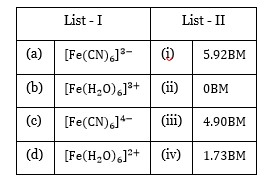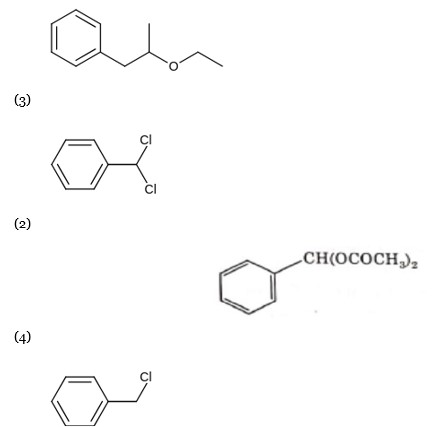Class 12th
Get insights from 12k questions on Class 12th, answered by students, alumni, and experts. You may also ask and answer any question you like about Class 12th
Follow Ask QuestionQuestions
Discussions
Active Users
Followers
New answer posted
2 months agoContributor-Level 10
H? O < H? S < H? Se < H? Te
Down the group acidic strength increases
So pK? value decreases
New answer posted
2 months agoContributor-Level 10
n (O? ) = 4/32 = 1/8 mol
n (H? ) = 2/2 = 1 mol
n (Total) = n (O? ) + n (H? ) = 1/8 + 1 = 9/8 mol
PV = nRT
P (Total) * 1 = (9/8) * 0.082 * 273
P (Total) = 25.18 atm
New answer posted
2 months agoContributor-Level 10
Λ°? (CH? COOH) = Λ°? (H? ) + Λ°? (CH? COO? ) = 350 + 50 = 400Scm² mol? ¹
α = Λ? / Λ°?
α = 20/400 = 5 * 10? ²
K? (CH? COOH) = Cα²
= 0.007 * (5 * 10? ²)²
= 1.75 * 10? molL? ¹
New answer posted
2 months agoContributor-Level 10
R: CH? OH
Certain mild reducing agents like hypophosphorus acid or ethanol reduce diazonium salts to arene and themselves get oxidised to phosphorous acid and ethanal respectively.
New answer posted
2 months agoContributor-Level 10
[Fe (CN)? ]? ³ Fe? ³ = 3d?
Unpaired electron = 1, μ = 1.7BM
[Fe (H? O)? ]? ³ Fe? ³ = 3d?
Unpaired electrons = 5, μ = 5.9BM
[Fe (CN)? ]? Fe? ² = 3d?
Unpaired electron = 0, μ = 0BM
[Fe (H? O)? ]? ² Fe? ² = 3d?
Unpaired electrons = 4, μ = 4.9BM
New answer posted
2 months agoContributor-Level 10
(a) List-I List-II
CO, HCl Anhydrous AlCl? /CuCl → (ii) Gattermann-Koch reaction
(b) R – C=O .
(c) R – CH? OH + R'COOH - (conc. H? SO? )-> (iv) Esterification
(d) R – CH? COOH - ( (i) X? /RedP (ii) H? O )-> (i) Hell-Volhard Zelinsky reaction
New question posted
2 months agoNew answer posted
2 months agoContributor-Level 10
CH? – CH? – COO? Na? - (NaOH, CaO, Heat)-> CH? – CH? + Na? CO?
Decarboxylation takes place by soda-lime (NaOH + CaO)
Taking an Exam? Selecting a College?
Get authentic answers from experts, students and alumni that you won't find anywhere else
Sign Up on ShikshaOn Shiksha, get access to
- 65k Colleges
- 1.2k Exams
- 679k Reviews
- 1800k Answers





